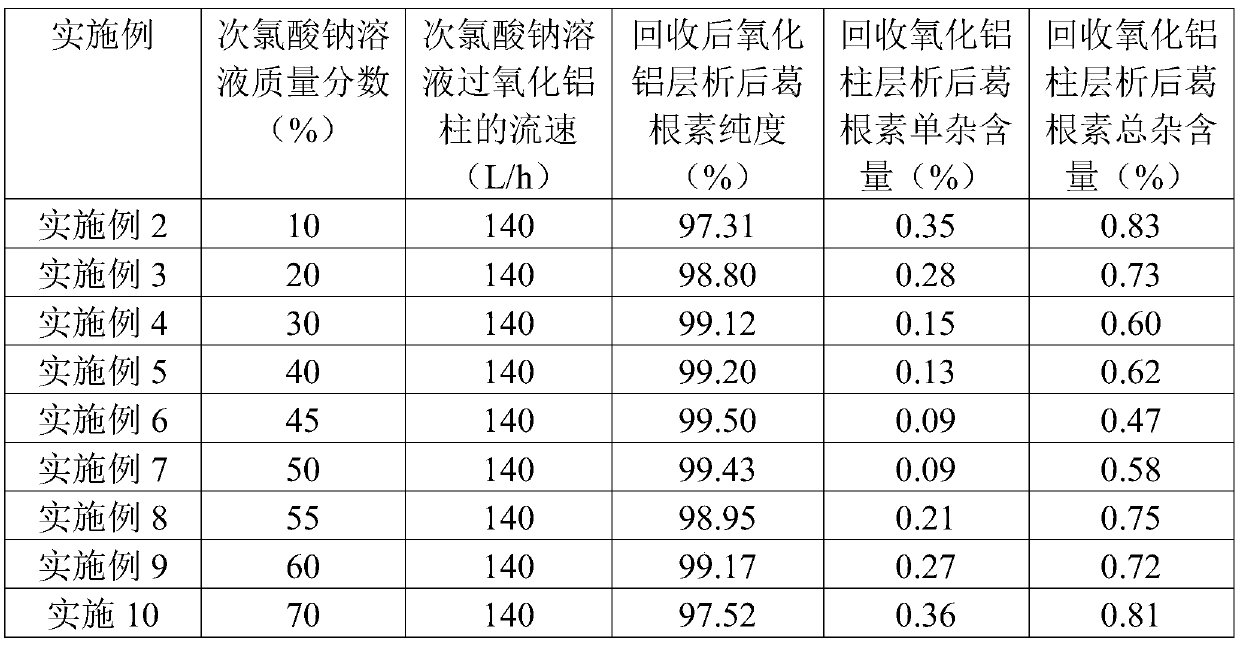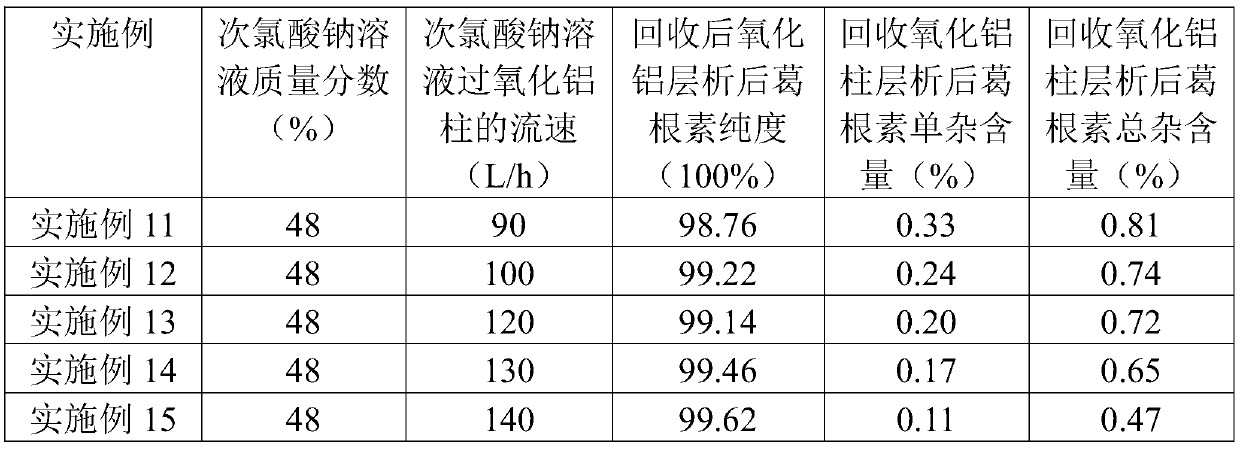Regeneration method of alumina column
An alumina column and alumina technology, applied in chemical instruments and methods, separation methods, filter regeneration, etc., can solve problems such as cost increase, environmental pollution, lack of alumina column regeneration methods, etc., and achieve chromatographic capacity recovery, Recovery of chromatography ability and good purification effect
- Summary
- Abstract
- Description
- Claims
- Application Information
AI Technical Summary
Problems solved by technology
Method used
Image
Examples
Embodiment 1
[0026] Step 1. Add a sodium hypochlorite solution with a mass fraction of 40% to the waste alumina column. The sodium hypochlorite solution flows through the alumina column at a flow rate of 150 L / h, and the alumina column is dripped dry. Wherein, the consumption of described sodium hypochlorite solution is 5 times of described aluminum oxide weight.
[0027] Step 2, flow the purified water through the dried alumina column obtained in step 1 until the pH value of the outflowing liquid is 7, drip dry the alumina column, the flow rate is 100L / h, and the consumption of purified water is 1% of the weight of alumina 5 times.
[0028] Step 3. Flow the ethanol with a mass fraction of 97% through the dried alumina column obtained in step 2 until the concentration of ethanol flowing in and out is the same, and drip dry the alumina column to obtain a regenerated alumina column, wherein the flow rate is 100 L / h, the amount of ethanol is 5 times the weight of alumina.
Embodiment 2-10
[0030] The process of purifying and recovering the waste alumina column in Examples 2-10 is the same as that of Example 1, except that the concentration of sodium hypochlorite and the flow rate of sodium hypochlorite flowing through the alumina column are different.
experiment example
[0032] Chromatographic capacity testing of regenerated alumina columns and new alumina columns
[0033] At present, the process for extracting puerarin from puerarin is generally to first wash pueraria, dry it, and then crush it into pueraria powder, and then obtain crude puerarin through ultrasonic-assisted extraction, water extraction or alcohol extraction. Usually, the process of ultrasonic-assisted extraction method is: kudzu root powder→ultrasonic extraction→filtration→decompression concentration→column passage→water washing→alcohol washing→decompression concentration→vacuum drying→crude puerarin. Usually the process of water extraction method is: Pueraria root powder→water extraction→filtering to obtain filtrate and filter residue→sodium hydroxide solution to extract residue→filtering to obtain filtrate→combining two filtrates→concentrating under reduced pressure→adjusting pH value→centrifugal separation→ Put the filtrate on a silica gel column → wash with water → ethano...
PUM
 Login to View More
Login to View More Abstract
Description
Claims
Application Information
 Login to View More
Login to View More - R&D
- Intellectual Property
- Life Sciences
- Materials
- Tech Scout
- Unparalleled Data Quality
- Higher Quality Content
- 60% Fewer Hallucinations
Browse by: Latest US Patents, China's latest patents, Technical Efficacy Thesaurus, Application Domain, Technology Topic, Popular Technical Reports.
© 2025 PatSnap. All rights reserved.Legal|Privacy policy|Modern Slavery Act Transparency Statement|Sitemap|About US| Contact US: help@patsnap.com



